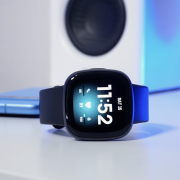
Our biggest wish was granted: hardware acceleration – the trick that makes iOS run so smoothly – is now a part of Android starting with version 3.0 Honeycomb. (That damned Google Code issue can finally be put to rest.) This was one of many changes highlighted by Google today. Among 2D and 3D hardware acceleration, developers can look forward to a revamped UI framework to create great-looking apps for tablets, support for multicore architectures, better multimedia support, enhanced connectivity options (mainly Bluetooth) and enhancements to enterprise features. A full list of the changes can be found at the Android 3.0 Platform Higlight page, as well as links to the newly-updated SDK, NDK, and ADT. We’ll be digging through the entirety of the list of changes soon enough, and we hope to have a breakdown for you guys in the coming moments.











sweet this great news cant wait to pick up the xoom
i cant wait to get my hands on one of the 3.0 tablets… finally android is catching up
Could Honeycomb power a smartphone?
This is exciting, but I think the vast majority of consumers are wanting this on their mobile. Tablets are fun, and they sell well, but not as well as mobiles, and for good reason. You take your mobile with you, in a space as small as your pocket, everywhere you go. I think many view a tablet as a luxury still, while smart phones are being viewed more and more as everyday devices. Add features like these to smartphones and the Apple crowd, Android’s biggest competition, will have their biggest advantage taken from them; their silky smooth OS will be just as smooth as the competition.
Super powerful IBM tablet with Honeycomb = swipe of my Amex.
“hw acceleration” typically means just that, that *hw* is used to speed things up. Assuming that’s still what it means, all Google is doing is adding sw hooks that can control this new hw… That likely means that phones don’t currently have this hw and won’t be able to make use of it. If you need it, it likely means havin to buy a new phone. The only bright spot for recent phone buyers is that “maybe” the mfgs and Google worked it out ahead of time and the go-fast hw is already in place, but that seems doubtful.
@din soon!!! soon gotta see mitias interview on engadget…
bring on CM8 LMAO no seriously when does everyone think the code will be released for AOSP? this will be great stuff on phones
Thats awesome news. I was always looking for an Android phone that was as smooth as an iPhone and it looks like my next phone will.
it will be a while before CM8 shows it’s head. GPS still doesn’t work correctly on the Evo running CM7
@kb It means using the GPU to accelerate drawing operations of the 2d Canvas API. It only requires that OpenGL ES 2.0 be supported by the hardware.
About friggin time. All they need to do now is ensure that Honeycomb will be compatible with phones.
Honeycombs big?
Please rSAP @ Google … pretty pretty please!
Bottomline is get a Tegra 2 phone to be sure you’ll get hardware acceleration with the OS upgrade later. I think no other phones will get it, unless they are at least dual cores, which Google might add support for anyway.
Wait…does Froyo support dual core processors? From what i have read, android 2.2 doesn’t support multi-core processors, so i am a bit confused why phones like the Atrix 4g are being shipped with froyo.
@kb: The Galaxy S line with Touchwiz 3.0 already has a hardware optimized UI. It’s the same GPU as in the iPhone 4. The Adreno 205 found in the Desire Z, Desire HD, and MyTouch 4G can also handle rendering the UI for a more responsive launcher. Google just hadn’t added the hooks yet because they tend to take a lowest-common-denominator approach with Android.
lol…..
This is a synch to do with root. Open your build.prop and add debug.sf.hw=1 and you get hardware acceleration. I’ve done it on my G1 and it helped out quite a bit. Really, I wish phones would come pre-rooted. Imagine a carrier endorsed cyanogenmod phone lol.
I am sorry, but my experience with iOS smoothness equates to its slowness. Sure it smoothly gets there, but in the same amount of time it takes iOS to get there, I’ve already done two additional tasks on my Android.
@Chocc1, none of the OS out on the market, Gingerbread, Foryo support, nor is it optimized for dual core processors. Seems like this feature is in Honeycomb though and just for tablets.
To your Atrix question, it was Motorola’s decision to use Froyo. It might be because they’ve worked on the phone before Gingerbread SDK was released and decided to continue using Froyo instead of going back and put Gingerbread. This would delay the release of the phone, which is what most companies don’t want. *shrugs*
I just hope that Google releases a Honeycomb version for our phones as well.
I’m happy that android software will catch up to the hardware , with tegra 3 quad core out next year this is great news.
cant wait to see it on a phone .
Make it quick google.
@kb Only need OpenGL ES enabled GPU to do this. My N1 is capable.